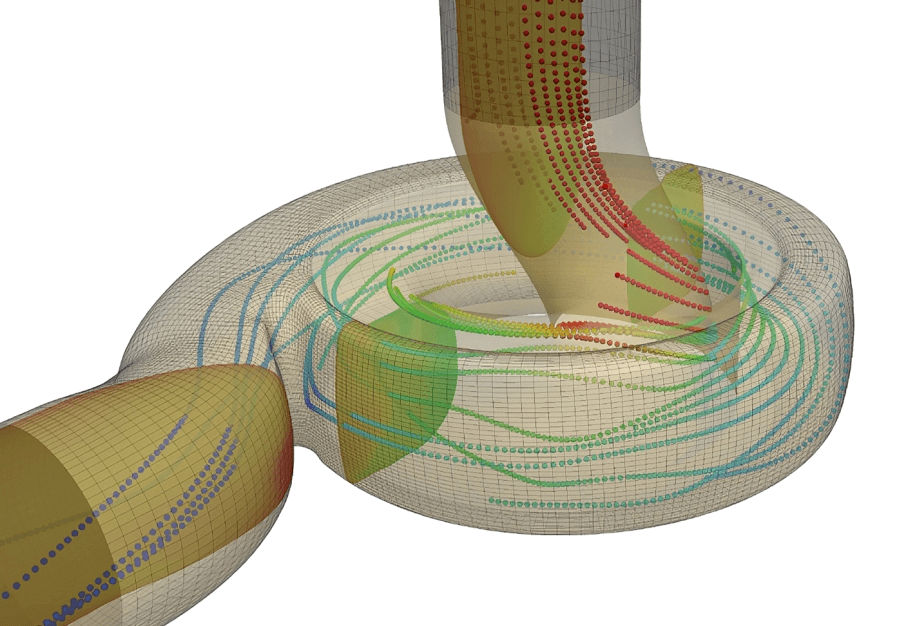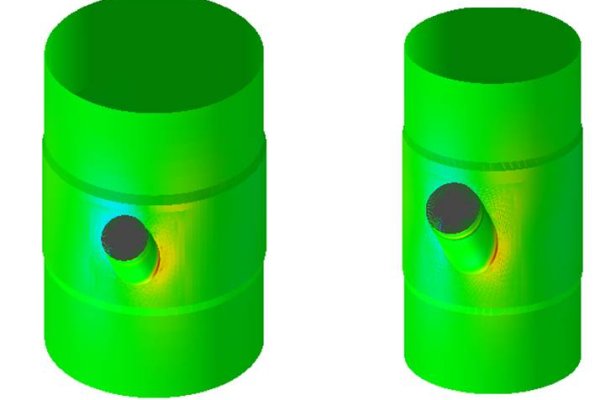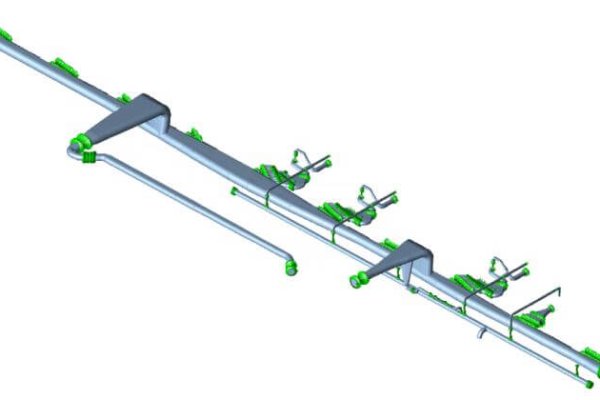Computational Fluid Dynamics Analysis
In this case study, we conducted a comprehensive analysis of the water flow in a pipeline featuring a 20-inch butterfly valve. The valve experienced operational issues under full system pressure, failing to open completely despite functioning correctly when the system was depressurized. Notably, elbows were positioned close to the valve on both upstream and downstream sides. The valve operated under a maximum flow rate of 3.7 meters per second.
The primary objective was to establish the relationship between the valve’s opening angle and the dynamic torque exerted by the fluid. We compared the computed torque versus the valve’s opening diagram to the actuator’s capacity. To achieve this, we performed Computational Fluid Dynamics (CFD) analyses at various angles, ranging from 30% open (40° from the fully closed position) to 100% open (90°). The model included sufficient piping both upstream and downstream to account for the effects of the elbows.
Analysis
For the flow analysis over the butterfly valve, the fluid was treated as incompressible. We employed a solution scheme to account for potential unsteady flow, utilizing the k-epsilon turbulence model. A large time step transient solver for incompressible flow ensured computational efficiency.
The analysis was conducted using the general-purpose CFD toolbox OpenFOAM. To compute the torque on the valve’s shaft, we integrated the contributions from both the pressure and shear forces acting on the valve. The valve was meticulously modeled to capture all possible flow effects, with the fluid modeled using a total of 550,000 elements.
The CFD analysis revealed that the specific operating conditions and piping layout were not the cause of the valve’s operational failure.
Conclusions
The torque was calculated as a function of the butterfly valve’s angle. The analysis indicated that the flow behavior could be considered steady. We validated the computed torque results by comparing them with various sources from the literature. We examined the effect of the elbows’ position upstream and downstream of the valve by comparing the computed torque to results obtained with straight piping. The findings showed that while the elbows had an effect, it was limited. The impact of the elbows largely diminished at the valve’s position.
The study concluded that the dynamic torque did not exceed the actuator’s capacity, suggesting that the operational failure was unlikely due to the flow conditions and piping layout. Therefore, other non-flow-related causes for the operating failure should be investigated.







